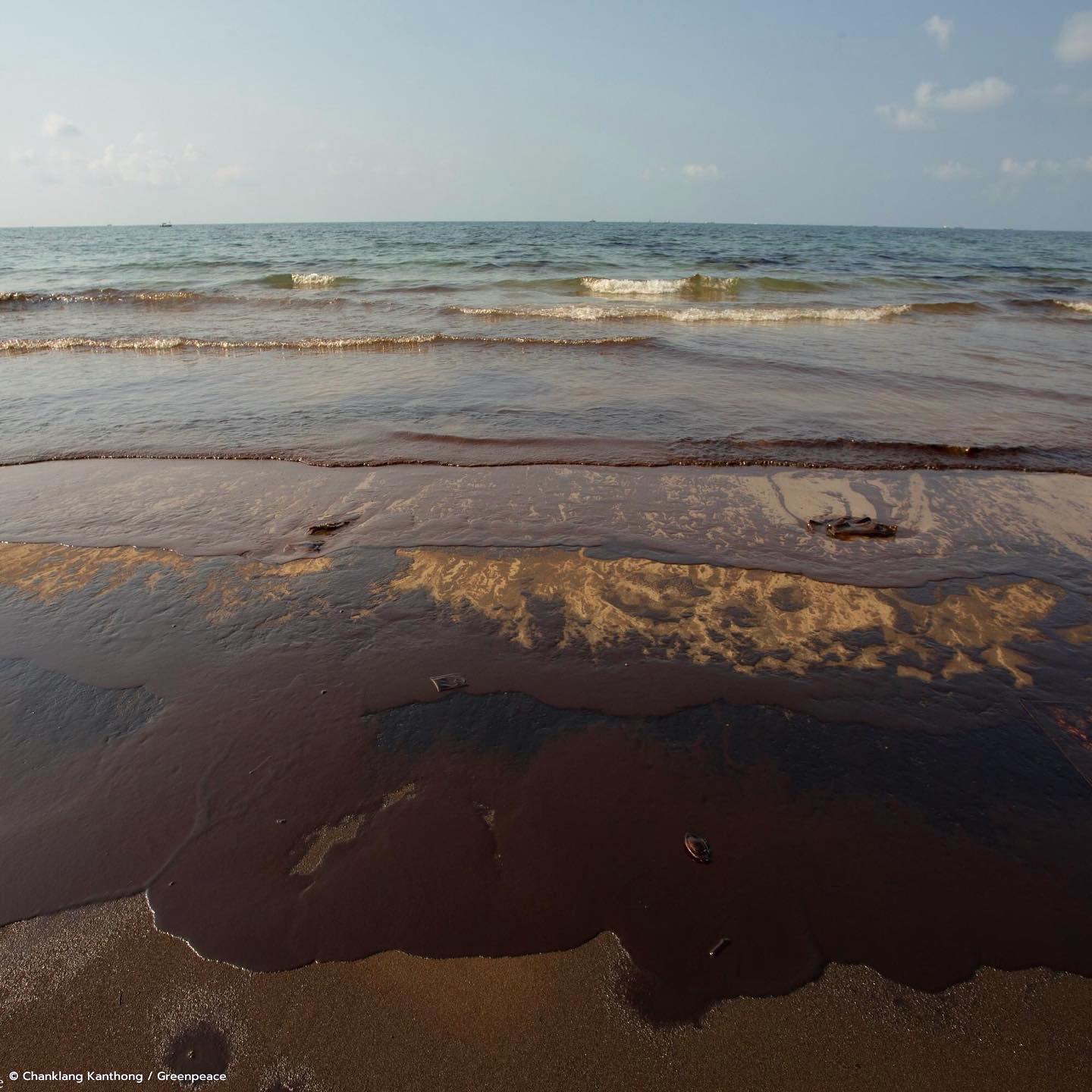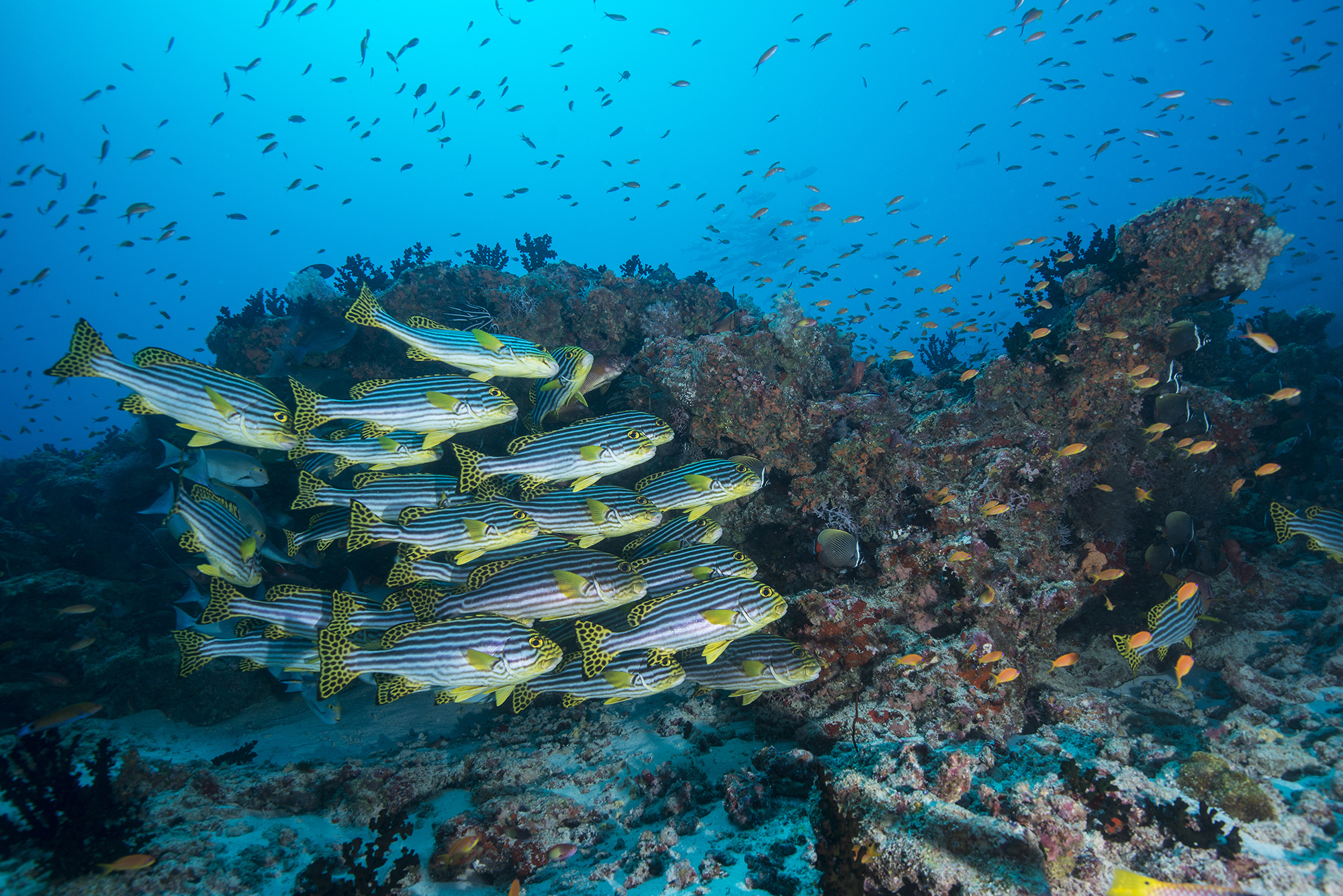
- An oil spill in the Gulf of Thailand that began in late January threatens to impact coral reefs, seagrass beds and local livelihoods in a nearby marine park.
- The spill, reported late on Jan. 25, originated from an underwater pipeline owned and operated by Thailand-based Star Petroleum Refining PLC, which said between 20,000 and 50,000 liters (5,300-13,200 gallons) of oil leaked into the ocean.
- Cleanup efforts are underway to deal with the crude oil slick at sea and along beaches on the mainland where parts of the slick have washed up.
- More than 200 oil spills have occurred in Thailand’s waters over the last century; environmental groups have called on Thailand’s government to transition the country away from fossil fuels, and on the oil and gas industry to better implement preventative measures to avoid future disasters.
Marine experts in Thailand have warned that a recent oil spill off the country’s east coast could impact sensitive underwater ecosystems that underpin local livelihoods in a nearby marine park.
Khao Laem Ya-Koh Samet National Park, designated for its coral reefs and seagrass beds, lies 25 kilometers (15 miles) from the site of the spill in the Gulf of Thailand.
The spill, reported late on Jan. 25, originated from an underwater pipeline owned and operated by Star Petroleum Refining PLC (SPRC), a firm majority-owned by U.S. oil giant Chevron. SPRC isolated the leak at a subsea point roughly 20 km (12 mi) off Thailand’s east coast in Rayong province.

Environmental groups have criticized SPRC for a lack of transparency around the incident. While the company said it had quickly brought the leak under control by Jan. 26, it has so far failed to confirm the total volume of crude oil that spilled into the ocean.
The company initially said 400,000 liters (106,000 gallons) of oil had escaped from the pipeline, but subsequently revised it down to 160,000 liters (42,300 gallons), and then again to “between 20,000 and 50,000 liters,” according to the company’s press releases, or between 5,300 and 13,200 gallons.
“Information about the volume of oil spilled has been inconsistent,” Tara Buakamsri, country director of Greenpeace Thailand, told Mongabay in an interview. “But the scale of the oil slick on the surface of the water several days later [indicates] that the volume of oil spilled must have been more than 50,000 liters.”
On Jan. 28, satellite imagery from Thailand’s Geo-Informatics and Space Technology Development Agency indicated a 16-square-kilometer (6-square-mile) slick of oil in the sea between the mainland and the island of Koh Samet.
Tara said the precise volume of oil must be identified and verified to assist with expert assessments of the longer-term impacts on marine ecosystems and local livelihoods.
In the immediate aftermath of the leak, an offshore cleanup operation led by the Royal Thai Navy used vessels equipped with inflatable boom barriers to contain the slick and spray it with more than 80,000 liters (21,000 gallons) of chemical dispersant to break down the oil into smaller droplets, according to local media reports.
The use of dispersants makes oil slicks appear less visible on the surface and can reduce the chances of surface slicks washing ashore, according to the U.S.-based Center for Biological Diversity, an environmental nonprofit. Nonetheless, it doesn’t reduce the amount of oil entering the environment. It simply pushes the contamination effects underwater, where dispersed oil remains a hazard to marine life and accumulates through the food chain.
Despite efforts to keep the slick at bay, oil began washing up along a 6-km (3.7-mi) stretch of the mainland at Mae Ramphueng Beach in Rayong late on Jan. 28. Cleanup crews have since been working in the tourist hub to clear the accumulating oil from the shoreline.

On Jan. 30, the minister of natural resources and environment said that vessels had been deployed to contain the slick and prevent it from approaching Koh Samet, part of Khao Laem Ya-Koh Samet National Park featuring sensitive marine ecosystems and tourist beaches.
“If the oil reached inside this area it could impact the beach and cause heavy damage to the shallow water corals,” the minister, Varawut Silpa-archa, said in local reports. In addition to containment booms, local authorities on Koh Samet have laid absorbent material on beaches on the island’s west coast as a precaution.
Given its location roughly 200 km (120 mi) south of Bangkok, Khao Laem Ya-Koh Samet National Park is the most-visited marine park in Thailand, with more than 250,000 visitors every year. The national park supports more than 130 species of coral and 77 species of sharks and rays, 40 of which are threatened species, according to the European Commission’s database of protected areas.
On Jan. 31, local media reported that small oil droplets, likely dissolved crude oil from the spill treated with chemical dispersants, began to wash up on the west coast of Koh Samet.
Thon Thamrongnawasawat, a marine biologist at Kasetsart University in Bangkok, said the dissolved oil patches could affect coral reefs at low tide and that past studies have shown that oil-contaminated corals are more prone to bleaching-related mortality. He added that Koh Samet’s coral reefs are already weak and susceptible to disease.
In fact, the area is only just recovering from a prior oil spill. In 2013, 50,000 liters of crude oil leaked from a pipe in the same vicinity. It took more than five years for marine life to recover, and experts estimate one-fifth of marine life in affected areas died.
Given much of the spilled oil is now dispersed below the water’s surface, there’s a risk of oil droplets combining with bacteria, plankton and other debris to form tarballs, according to Tara from Greenpeace. “These tarballs could wash up on the beaches [and] underwater ecosystems for months,” he said. “We need to monitor this over the long term.”

Tara said there’s a complacency around the way Thailand’s oil industry prepares for spill events. Little has changed since the 2013 spill, he said, and preventative measures are lacking. “They are using the same equipment as nine years ago … but this is not sufficient to actually [deal with] the oil spill,” he said. He added cleanup personnel should prioritize containing and collecting the oil slick from the surface before resorting to such heavy use of chemical dispersants, which ultimately doesn’t solve the problem.
In a statement, Greenpeace Thailand highlighted that at least 240 oil spills have occurred in Thailand’s waters since 1974. “[We call] on the government to form an independent committee to investigate this oil pollution disaster, to urgently review the National Energy Plan to transition the country away from dangerous fossil fuels, and to halt plans to expand the oil and gas industry which endangers our marine environment, as well as the lives and livelihoods of millions.” the group said.
The spill occurred days before Thailand implemented new tourist-friendly COVID-19 mitigation measures, and could jeopardize the recovery of nearby enterprises that have suffered during the pandemic. Affected mainland areas along Mae Ramphueng Beach have been under a state of emergency and declared off-limits to the public, with businesses ordered to close and fisheries to halt their catches for at least one month until the environmental conditions improve.
While financial assistance has been offered, some say it’s no substitute. “I don’t want compensation. I want a healthy sea that I can work in for my livelihood,” Tuem, a 46-year-old fisherman, told AFP. “The sea can give us money every day. The sea was good in the past few years. I do not know how many years before it becomes good again.”
Banner image: Specialists use inflatable booms and chemical dispersants to contain the crude oil slick along the tideline in the Gulf of Thailand. Photo courtesy of Chankland Kanthong / Greenpeace Thailand
FEEDBACK: Use this form to send a message to the author of this post. If you want to post a public comment, you can do that at the bottom of the page.
Gulf of Thailand oil pipeline leak threatens reef-rich marine park
Source: Trends News

0 Comments